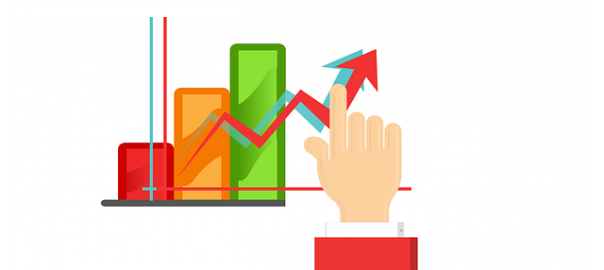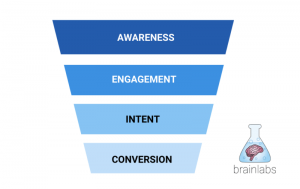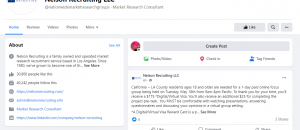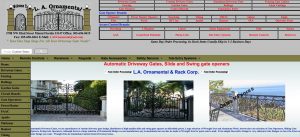
It’s easy to forget your own blog when you spend a lot of time searching for traffic opportunities elsewhere.
Off-site traffic is definitely good to have, BUT—
- What about your current visitors?
- How do you keep them on your blog instead of driving them outside?
- What about your bounce rate?
Believe it or not, the most important traffic source is your blog. That’s why an optimal internal linking strategy can only bring benefits on both your on-site and off-site traffic.
Let’s see why.
It’s Traffic, It’s SEO
The vitality of your blog starts on your blog itself.
When you take care of your blog and you put your visitors first, you will do anything in your power to make your blog irresistibly interesting and to offer your visitors all you can to keep them from visiting other resources but the content you offer.
That doesn’t mean you shouldn’t add outbound links at all, only that your own content is your priority instead of outside resources.
A clever use of keywords and inter-posts linking will help you achieve this goal and keep traffic on your blog.
As Cormac Reynolds says:
Cormac Reynolds
Internal links are a great way to pass juice from other pages on your site to those you want to rank. Using internal keywords to interlink pages naturally and allow users the chance to navigate in a natural manner helps lower bounce rates and keep people on-site. Additionally, using keyword anchor text within the site is no hard either once done naturally and may also help distribute juice and rank pages.
Your search engine and traffic optimization starts on-page, with a clever internal linking strategy.
It might sound obvious, but believe me, it isn’t — many bloggers look for outside traffic and backlinks first and only turn to internal links when they realize their efforts are not paying off.
No amount of off-site strategy will make it without a great on-page, site-wide strategy first. If your users can’t find what they are looking for on your blog, they will look elsewhere and they might not come back.
Choose your anchor text keywords wisely. Don’t overoptimize and keep your anchor text natural and flowing well with the remainder of the content.
It must make sense, too.
Do NOT use nofollow tags on internal links. For example, Wikipedia links out with nofollow but never uses it to link to internal pages.
Use as many links as needed, but don’t link twice to the same page — I see this tactic used often on overoptimized blogs but it doesn’t make sense for the user and it might wind up being a trigger for search engine penalties.
Play it safe for your user and your SEO.
How To Organize Your Internal Linking For A Winning Blog Traffic Strategy

You may need some time to do this if your blog is very populated.

PDF is a format that search engines can scan for content and links and often convert in HTML for HTML-only viewers, so the advantage is great in this sense.

David Leonhardt, president at THGM Writers, does it, too:
David Leonhardt
I look for tie-ins to previous posts. In most cases, I just add the link contextually; in other cases, I add a centered line on its own… “Read also: URL”
But more importantly, I try to refer to services we offer and link to those landing/sales pages. Since my posts are generally about writing, I can usually find a reason to link to the sales page for our speechwriting services or our book writing services or our blog writing services.

It’s links between posts, pages and other contents (PDFs, etc.) that count (see previous points).
Not one page or blog post of your blog should be isolated — your blog is a small network, a Web in miniature! Make sure every piece of content gets found.
Lukasz Zelezny from Zelezny.uk summarizes the internal linking strategy pretty well:
Lukasz Zelezny
Effective internal link building is just as important in my opinion as outbound linking. Especially when you’re linking to your blog as this is where you can build trust and encourage people to purchase the product or service that you are offering.
To start with, you want to focus on your menu bars. Make sure there is a menu bar on every page and that it has a link to your blog in it. Next go down to your footer – this is often ignored by website owners but it’s another great place to include blog links, as well as links to the latest posts on your site.
Next, put your sidebar to work if you have one. This is another great place to display your latest blog posts and blog comments. If someone browsing your homepage sees something interesting, they’ll click on it and stay on your site longer increasing your chance of conversion.
Finally, make sure that all of your new blog posts contain links to older ones. This is a great way of bringing old posts to life and will keep your best posts easily accessible. Remember to optimise the anchors to match the SEO title tag on the destination post.
Once your blog is well linked inside, you can leverage this aspect to help new visitors jump from a post to another in order to find what they are looking for.
Now is the time to increase your incoming traffic from the outside Web!
How do you link internally in your blog? How did you improve your overall blog traffic? Share your views and experience in the comments below.
(55)
Report Post












